Sharing our view on trends and challenges in the context of 2020 runs the risk of being too focused in the short term on developments with regard to EXPO 2020 in Dubai. We are currently in a situation where many projects are focused on EXPO 2020 with a fixed and inflexible schedule of delivery aligned with the start of the event. All the pre-planning and activity leading up to this is on a fixed schedule. In addition, many projects need to be completed, not only out of the original schedule but additional projects as planned. The developer’s efforts to limit cost increase due to tight execution plans are very strong. A key consideration is an agility and flexibility in delivering on budget and on time while meeting EXPO 2020 requirements successfully. But of course, there is a wider perspective on the façade industry in terms of trends and challenges. [caption...
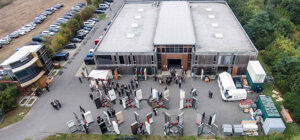

Smart Windows to Cut Energy Use-Google Inc., New York, Usa
Google wanted to improve the aesthetic value and the energy efficiency of its offices in New York at the 111 Eighth Avenue, one of the largest buildings in town. During the renovation, they needed a window that would incorporate the essential sustainable and energy efficient characteristics, while simultaneously being sturdy and extremely durable. The innovative R&D department of ALUMIL, developed a tailor made version of the excellent casement window SUPREME S91, which is specially designed for passive houses. A customized solution of this particular window was chosen by Google Inc. In total, 3,500 windows were fabricated for the successful renovation of Google’s fenestration at its central offices in New York. The product was specially designed in order to meet the high requirements of passive houses (certified by the German Passive House Institute). It is ideal for heavy duty, insulated casement windows with high security level. The system is characterized for...
Posted on: 12 Jan 2018
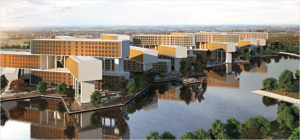
Vertically Stacked Modules – Infosys Campus MIHAN, Nagpur
Infosys Campus MIHAN is located in Nagpur, and sits in a ‘Special Economic Zone- SEZ’. Special Economic Zones are designated areas that possess special fiscal regulations different from the rest of the land with the aim of easing international trade and being conducive to foreign direct investment. The client brief was simply ‘to create the world’s most sustainable office building’. Morphogenesis took this opportunity to test if a development of this scale could be net zero on water, energy and waste to landfill, with a future aim to develop a model for sustainable master-planning for larger sites. The geology of the land played a key role in the morphological evolution; Nagpur lies in seismic zone II and the soil has a high bearing capacity. The building modules or tubes, are largely column free spaces that are stacked into a four floor format and are vertically connected through an atrium and...
Posted on: 11 Jan 2018
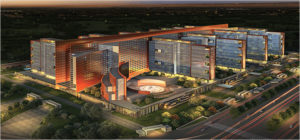
The Architecture of Sustainability
Morphogenesis is a 21 year old architectural firm founded by architects Sonali and Manit Rastogi. Ever since their inception in 1996, Morphogenesis has had a reputation of being an innovative practice at the forefront of thought leadership in design. They look at all aspects of the context and arrive at an innovative response to the physical, geographical and cultural conditions that address the user brief, and ultimately aspiration. They have done over 450 projects across India, Bangladesh, Nepal, Sri Lanka, South Africa and the UAE. [caption id="attachment_27801" align="alignnone" width="774"] Pearl Academy by Morphogenesis[/caption] Morphogenesis has over 130 professionals in Delhi and Bangalore offices. Recipient of over 80 international and national awards, Morphogenesis provides specialized services in distinct verticals like master planning, residential, commercial, workplace, institutional, hospitality, interiors and landscape designs, all with a strong backbone of ‘Green Design’ The distinguished architects, Manit Rastogi and Sonali Rastogi candidly spoke to WFM...
Posted on: 10 Jan 2018

Window Remote Control and Operation Systems
Natural smoke and heat exhaust systems improve indoor safety conditions in case of fire inside a building. Main Risks During Fire In the event of a fire inside a building, smoke and hot gases rise up in the building, creating a layer of dangerous gases under the ceiling, which fills up the room in a very short time. The smoke precludes the visibility of the emergency exit or impedes the prompt intervention of the firemen. Due to the toxic substance of the smoke, 90% of fire victims die due to smoke inhalation. The second critical risk is the flashover caused by the very high temperature inside the building that could generate an explosion or big damage to the building structures, with the consequent collapse. Why Use Smoke Ventilation? To avoid the above dangerous events and keep escape routes clear for longer, and also to ensure that the fire service can...
Posted on: 09 Jan 2018
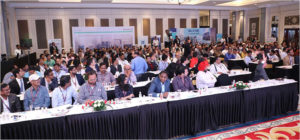
The Exquisite Balance of Technology & Viability – Zak World of Facades
Zak World of Facades through its 27th edition globally and 6th edition in Mumbai, once again took up the ongoing cause of empowering the facade industry and bringing together the stakeholders to discuss and dwell on some novel concepts and ideas like ventilation, solar shading, structural glass, alternative facade materials - both natural and synthetic in nature, natural cladding material, GFRC and a lot more. The one day conference held every year in prominent metropolitan cities of India is becoming a ‘go to’ event for the most prominent and appreciated names from the construction industry in India. This time, at Mumbai, it was no different when the facade experts from India and abroad converged and shared their expertise and experience in order to achieve best façade execution practices. Needless to say, this edition exhibited some of the finest facade products and hosted some highly technical, but relevant to the Indian...
Posted on: 04 Oct 2017

Nalini Kembhavi
Nalini Kembhavi graduated from Sir JJ College of Architecture in 1972 and partnered her husband in establishing Kembhavi Architecture Foundation. She was instrumental in strengthening the Dept. of Architecture in BVB College, Hubli and is an expert pedagogue at various institutions. Nalini’s bent towards green practices is one of her primary strengths and her course on solar passive architecture at IIT (Powai) fortified the firm’s knowledge base. A strong proponent of the green revolution, she steered the firm to join the Green Movement with an assortment of eco-sensitive habitats and a certified green building - one of the first in India. Nalini Kembhavi believes in creating innovative designs leaning towards a greener, better future, backed by competent technology and research.
Posted on: 04 Oct 2017
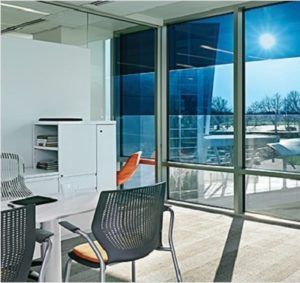
New Developments in Dynamic Glass
From very early on, man has been living outdoors and has evolved to need exposure to sunlight for our health and well-being. With the advent of architecture, man has sought means of replicating this natural light, and has developed artificial lighting to provide lighting on demand. Such invention has freed us from daylight dependence and has transformed the way we live and build. Today, we spend around 90 per cent of our time in enclosed spaces, lit with fluorescent light, because of which daylight harvesting has been progressively neglected. It is only recently that scientists have started to understand how light influences our body and mind. In addition to the cells that contribute to the formation of images, our eyes also contains cells responsible for the so-called “non-visual effects” of light. Those cells are light-sensitive and key for the regulation of several of our biological functions such as sleep, mood,...
Posted on: 28 Aug 2017
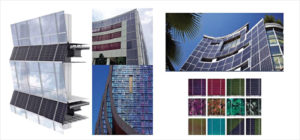
Future of BIPV
Global market for Building-integrated photovoltaics (BIPV) is projected to grow from a current low of US$5B to a high of US$26B by 2022. This represents an exponential growth of 27 per cent CAGR. There appears to be a sudden surge of interest in BIPV. It is not driven by the finite space available for rack mounted rooftop PV. BIPV, as applied to the façade, will offer the best option to increase solar integration into the built environment. This appears to be consistent with the big rush for decentralised building and nett zero energy buildings. While we can certainly afford to be optimistic about the surging interest in BIPV, there remain certain fundamental real world challenges which need to be overcome before BIPV can be expected to take traction within the building sector. The complexity of these challenges, aesthetical, efficiency and commercial in nature, are the primary reasons why BIPV has...
Posted on: 11 Aug 2017
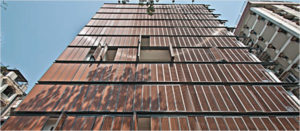
Our Customers Are Our Biggest Asset
[caption id="" align="alignnone" width="192"] Jean-Marc Luvisutto Managing Director, Sapa Building Systems - Middle East & India[/caption] Jean-Marc Luvisutto is the Managing Director, SBS (Sapa Building Systems) - Middle East and India. He is associated with the company for the past 38 years, spearheading various divisions including technical, marketing and communication, from various locations (France, Portugal, UK). He is a civil engineer (MSc) from ENSTIMA (Ecole Nationale Supérieure des Techniques Industrielles et des Minesd’Ales) in France. He Joined Technal in Toulouse (France) in 1979 as a product development engineer in the R&D department. From 2000 to2008, Luvisutto managed the entire R&D activity for the Technal Brand. In 2008, he moved to Bahrain to manage Technal Middle East. After the merger between Orkla/Sapa and Hydro in 2013, he took over the management of Sapa Building Systems (SBS) Middle East, and its two additional brands: Sapa Building System and Wicona. Since July...
Posted on: 23 May 2017
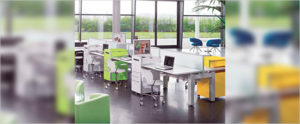
Glass Facades – Culprits or Geniuses?
First things first, I wish to make it clear that the views presented in this article are not influenced or biased in any way by me being a stakeholder in the glass facade industry. Yes, my profession as a glass supplier did motivate me to pen (rather type!) this down but my aim here is to present, as objectively as possible, the reasons why glass is being used as ubiquitously as we see today, and whether or not we are right in doing so. This article focuses on three key aspects of a glass facade - day lighting, energy and safety - and in the process analyses its effects, its benefits, the problems arising from its use and tools to help overcome some of these problems. For ease of understanding and to maintain focus on the core topic of this discussion, I have overlooked the regulatory requirements of glass facades...
Posted on: 02 Mar 2017
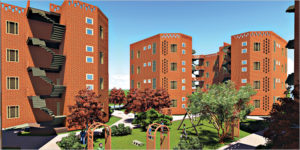
Cost Efficient Fenestrations Case Study: Slum Rehabilitation, Kathputli Colony, New Delhi
Kathputli Colony is New Delhi’s largest performers’ slums, home to magicians, dancers, puppeteers, acrobats and drummers whose families migrated here during the 1960’s and 1970’s from villages across India. An illegal settlement in a dilapidated northern pocket of the city, this place is a thriving paradox. Its denizens allure their audiences into a resilient world where everything is possible. This thesis is an exercise – not merely in affordable housing and slum rehabilitation schemes, but in the exploration of possibilities. The idea is to create a scheme that resonates with the people of Kathputli, allowing them to thrive as artists. And on the other hand, exploring the larger perspective of amenities we must take up cost efficient architecture with special emphasis on treatment of fenestrations as our priority. Delhi climate is a monsoon-influenced humid subtropical climate with a very high variation in comparison of summers and winter. Summers begin in...
Posted on: 20 Oct 2016

Ben van Berkel
Ben van Berkel studied architecture at the Rietveld Academy in Amsterdam and the Architectural Association in London, receiving the AA Diploma with Honours in 1987. In 1988 Ben Van Berkel and Caroline Bos founded the UNStudio which is an international architectural design studio specialising in architecture, urban development and infrastructural projects. UNStudio Architectural Sustainability Platform engages all UNStudio projects from the early phases in order to ensure that the correct choices are made and that the office’s high sustainable standards remain an integral part of the design process. They make sure that sustainable knowledge and conclusions directly inform the design decisions. This involves both active and passive design tools, which have a recognisable effect on the design of the building, product or urban plan. The ASP is committed to the promotion and practice of sustainable design. The Architectural Sustainability Platform is continually involved in the development of new tools for...
Posted on: 01 Jul 2016
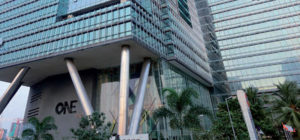
Fully Glazed High-Rise An Architectural Dream Stays a Reality!
During the times of modern architecture and the international style the dream of fully glazed highrise buildings became a sparkling reality – creating astonishing façades, allowing an interaction between inside and outside and paying homage to great views. But in present days due to building regulations and higher sustainability demands this architectural intent has become more and more impossible to realize. Therefore the recently opened Festo Automation Center with its all-glass façade points out the enormous technological accomplishments and the intelligence that lies within the design of the building. [caption id="attachment_38099" align="alignleft" width="217"] Fig.1: The Festo Automation Center Tower standing proudly in Stuttgart[/caption] A normal or rather passive building envelope is transformed into an active building component reacting dynamically to changing environmental conditions. As a result cooling energy needed can be reduced by up to 20 per cent and the user comfort can be increased. This high-performance façade is based...
Posted on: 28 Jun 2016
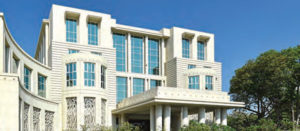
Go for Responsible Façades Which Could Minimize Energy Liability
WFM: What are the important aspects to be considered while designing and installing fenestrations? Nilabh Nagar (NN): The most important design factor would be the orientation of the opening. But many a times, constraints of site and function do not allow proper orientation. So one needs to adopt other methods. The summer-winter contradiction can best be addressed on the south face only. In east and west façades, the sun comes at low angles and can only be done by cutting off. On the south façade, Simply by having awnings/sun shades to match solar angle for winter and summer as well adjustable louvres can easily get the benefits asked (We have used them in important projects: e.g., Infosys SDB). However the proportion of windows, overhang of balconies in residential buildings Chajjas, etc., greatly contribute to optimised lighting. We must ensure that window is not too small to create glare. There are...
Posted on: 28 Jun 2016
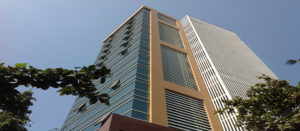
Tips for Optimizing Daylighting
Since inception, the primary function of buildings was to provide shelter and protection from the environment. As time passed, lifestyle changed and so did architecture where the original concept of providing shelter transformed into providing comfortable indoor ambiance. During this transition, building façades have gone through a lot of changes and modifications. The building façades remain one of the most important exterior components for building functionality. Apart from just aesthetic point, it also has a critical role related to energy performance and interior functioning of a building. [caption id="" align="alignright" width="260"] A hotel in Mumbai - achieved energy efficiency and optimum daylighting by controlling floor to window ratio, using recessed windows for solar shading and high performance clear glass[/caption] In case of a window, the basic objective is to admit daylight in a building and also provide view to the user. As quoted “a window that admits sunlight for winter...
Posted on: 20 Jun 2016

